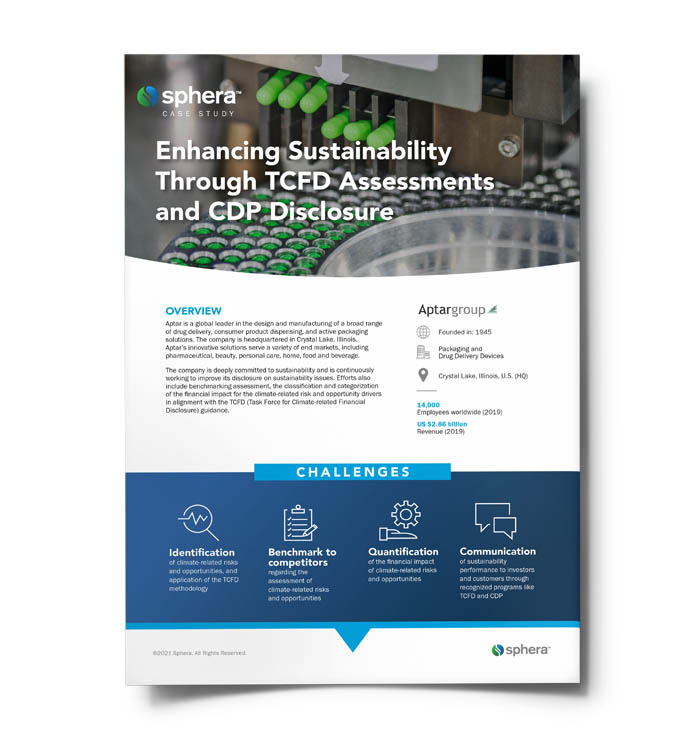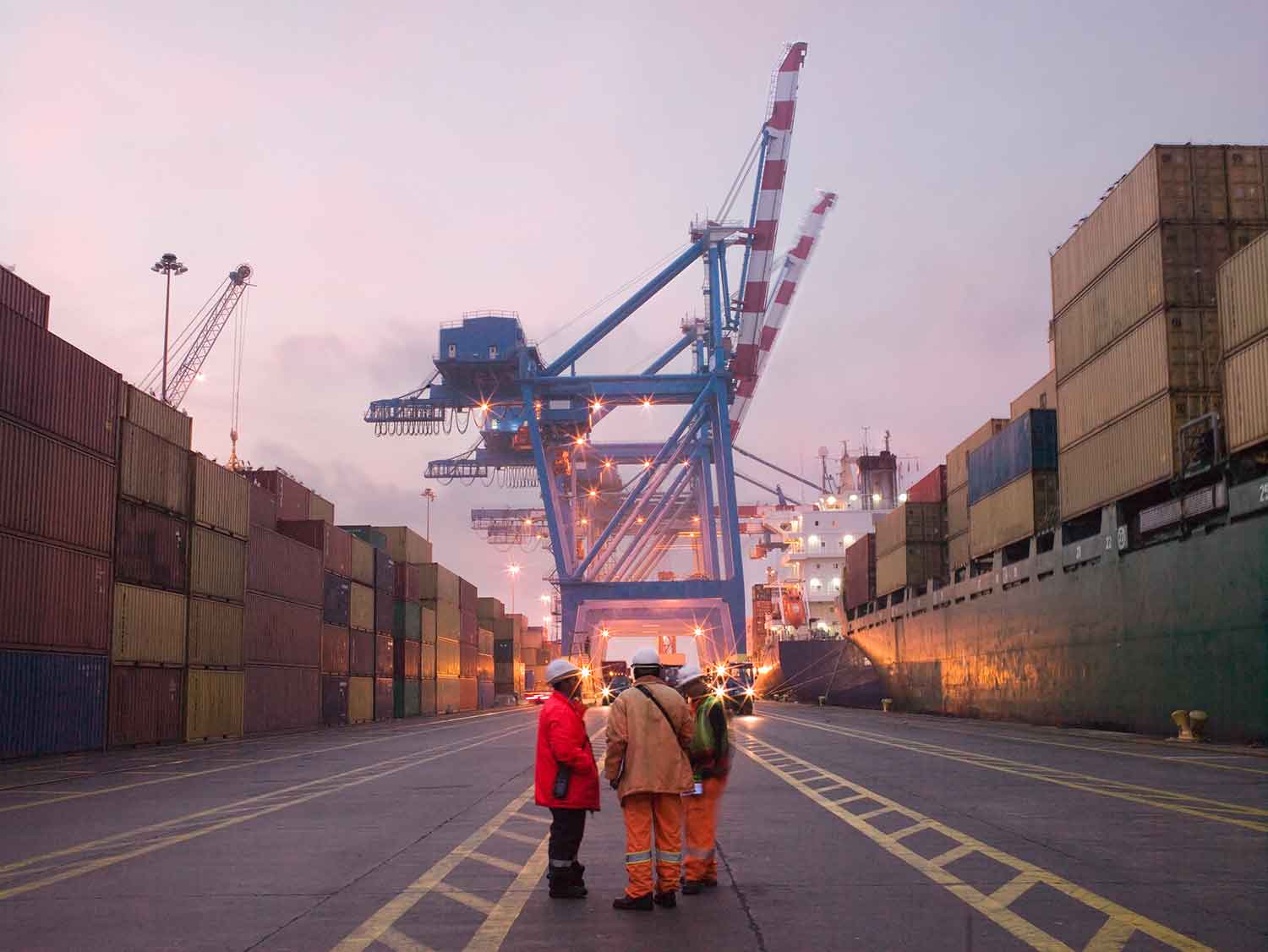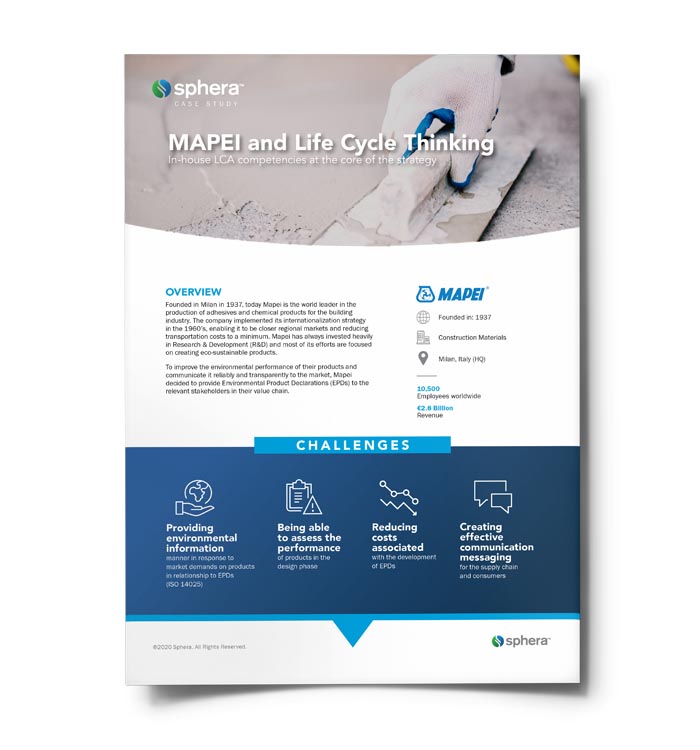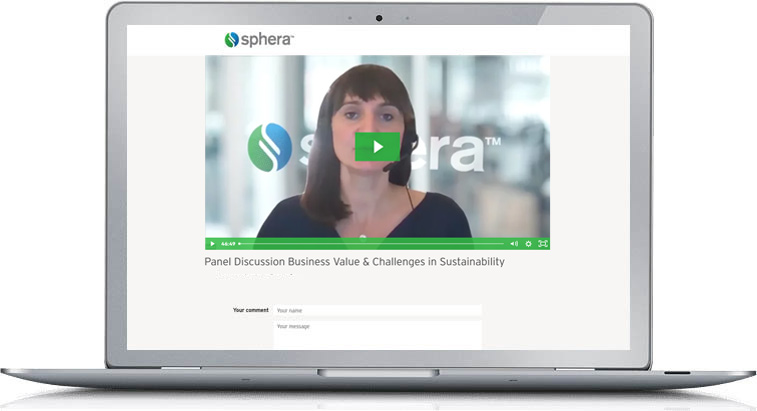Join Sandy Smith and Philippe Guillard as they discuss the Task Force on Climate Related Financial Disclosures (TCFD) and climate risk in the context of the SEC’s March 21st climate proposal. Don’t miss our earlier episode in this series covering Scope 3 emissions and climate risk, or our episode about Scope 1 and 2 emissions.
The following transcript was edited for style, length and clarity.
Philippe Guillard:
Hello and welcome to the SpheraNOW ESG Podcast, a program focused on safety, sustainability and productivity topics. I’m Philippe Guillard, vice president of global solutions here at Sphera. We’re joined by Dr. Sandy Smith, our VP of sales for EHS&S in the European and Middle Eastern regions. Sandy, thank you for joining.
Sandy Smith:
Pleasure, Philippe. Nice to be here.
Philippe Guillard:
Great. We’re going to be discussing the SEC’s March 21st climate disclosure proposal, which is loosely based on the Task Force on Climate Related Financial Disclosures, or TCFD. If the SEC proposal is passed, it will force publicly traded companies in the U.S. to measure and report on Scope 1, 2 and 3 emissions, as well as all climate-related risks that could materially affect the company’s performance. Larger companies will have to comply in 2023. And smaller publicly traded companies will have to comply in 2024.
This podcast is the third one in a three-part series on this topic. And today we’re talking about climate risk, how to address it, what you will need and how to report on it. To begin though, I’m going to give a quick overview of the SEC’s proposal, and then we’ll get into the discussion.
The SEC’s proposed rule entails a number of provisions, all aimed at helping investors better understand how climate related risks, affect a business’ operations, strategies and financial performance.
The most important provisions to note include the following:
- One, mandatory reporting of Scope 1 and Scope 2 emissions, which must be fully audited by a third party to validate.
- Two, mandatory reporting of Scope 3 emissions, if they are material to the business’ financial performance, or if the companies have made public commitments to Scope 3 reductions. You often hear CEOs in the industry saying they’re planning on their companies being carbon neutral by a certain date. Scope 3 emissions include those sorts of goals.
- Three, mandatory reporting of all climate-related risks that could materially affect the company’s performance. This includes everything from natural disasters being exacerbated by global warming to the impact of potential carbon taxes. And finally, the proposed rule offers a phased implementation, with the largest organizations expected to comply by 2023 and smaller publicly traded organizations by 2024. It also includes carve outs and exceptions as well as significant flexibility when it comes to whether and how businesses measure and report their Scope 3 emissions.
Okay, that’s the background. Sandy, in straightforward terms, can you help define climate risk as it relates to the context of the Task Force on Climate-Related Financial Disclosures or TCFD?
Sandy Smith:
Yes. Thanks a lot, Philippe. The TCFD puts climate risk into two categories. It includes physical risk as the first. You’ve got the classic sea level rise, increased extreme weather events and heat stress all in physical risk. And then everything else is bucketed in transition risk. In there we have a lot of meat – we have policy risk, we have legal risk in terms of changing legislations and internal prices of carbon. We have technology risk, we have market risk and we also have reputational risk.
Philippe Guillard:
That’s great, Sandy. On the physical side, I think that’s quite straightforward to understand. It’s probably another thing to actually mitigate those risks. But on the transition side, you said it was basically all the other kinds of risks you run into. If I understand that correctly, that’s not only risky to your operations as you transition to meet these climate related challenges, but also, I’m assuming it’s how it compares with its peers and regulators as they change as well. It’s a moving target in a lot of places, so it’s really about evaluating those things. Have I got that right?
Sandy Smith:
They’re both difficult to quantify, both the physical and the transitional, but on the transitional side, the evolving regulatory framework is different. It’s global. It involves monitoring transitional risks across your value chain, across the U.S., in Europe or in APAC with the different regulations from the technology side, as well as monitoring what your competitors are doing. It also involves evaluating how you are transitioning out of fossil fuels into new renewable technologies, and how quickly it can be done. Transitional risk also involves some of the associated risks with putting these new technologies in place. So, on both sides of the physical and on the transactional risk, it’s quite complicated to assess.
Philippe Guillard:
Great. Well, thank you for that clarity. That does sound like a handful, but I know we’ll work through it. Back to the SEC, just for a minute, and its proposal. As part of that run through we gave at the beginning, we know that it’s going to be loosely based on the Task Force on Climate Related Financial Disclosures, or TCFD. Can you give us a rundown on the TCFD and its approach to climate risk?
Sandy Smith:
TCFD’s been around since 2017, particularly the U.K. It’s interesting that in the U.S., they’re looking to include it in regulatory frameworks. It was started and shared by our ex-governor of the Bank of England, Mark Carney, a Canadian. The TCFD has four main components to it. It has metrics and targets which are what we’re very interested in. You mentioned it with the SEC before – it’s about calculating your Scope 1, Scope 2 and Scope 3 emissions. Companies need to consider how they’re coming up with those numbers, and how they’re assessing the carbon impact of their business and value chain.
The TCFD also includes a risk management process. This involves describing and identifying which risks impact your business. The TCFD includes a strategic component, identifying opportunities, the short, medium or long-term risks and describing the impacts associated with those opportunities and your financial planning. This gets wrapped up into a governance process where within the TCFD framework, you’re providing a description of the board’s oversight. How does management come into this? How frequently are you reporting up and also into what structures are you reporting those risks? The TCFD involves these four main buckets – governance strategy, risk management, metrics and targets.
Philippe Guillard:
That’s interesting. That approach sounds like it’s very well thought out. What I do like about it is identifying risks, mitigating risks and also finding opportunities. Which is a good way to look at it. Although there is some change, I’m sure there’s going to be some things that we can work on, so to speak. That’s very interesting.
Another thing you said, Sandy, that I thought was interesting was, of course, the SEC’s climate disclosure applies to U.S. publicly traded companies, but that it’s loosely based on TCFD guidance. And from your description, it sounds like a lot of that was developed in Europe. How does Europe handle that differently than a U.S. company would?
Sandy Smith:
Yeah, I think the global perspective is really good. The TCFD does seem to be getting international recognition. This spring, we will be seeing the first TCFD disclosures for publicly listed businesses within the U.K. I think that’s going to be interesting to see what they’ve done and how they’ve used that framework. It is a very broad overarching framework, if we go into APAC, into Japan, we’re seeing the TCFD mentioned in the regulatory frameworks, the same as it’s being mentioned in the U.S. ones. Because it’s a broad framework, as you hinted, there’s some massive differences within approaches. So, we’re going to tend to see some very good disclosures and some very poor disclosures, all reporting within the TCFD framework.
It’s very much about looking at the impacts of climate change to your business from a financial perspective. And again, we have the short, medium and long term. The TCFD talks about short term being on a quarterly basis, and medium term, maybe being one or two years. There’s some argument to say in certain sectors, there may be very little impact from climate change on a business in certain sectors within those short-term timeframes. Even though we have to get to net zero quickly, some of the impacts are potentially on a longer timeframe than a quarter by quarter, year by year basis. If we look at the European marketplace, we have this concept of double materiality. You’re looking at the risk perspective, not only from the financial side, which is great and important, but also how your business also impacts the environment. It may not be a significant risk for you and your business from a financial perspective in the next one to two years, but your business may be having a significant impact on the environment, and therefore has that double materiality. Within the European marketplace, businesses would be encouraged to disclose those aspects.

Philippe Guillard:
What I’d take from that is that the TCFD is becoming a little more widely adopted. What you also brought up there is that there’s going to be challenges depending on how that framework is filled out when it comes to double materiality versus not, or versus the financial performance. With that in mind, the next logical thing is to talk about the challenges. And what do you see, Sandy, as the key challenges when it comes to measuring and managing these climate risks from either different geographies or different portions of the world or just in general?
Sandy Smith:
The TCFD is a very good framework, but as with all frameworks, it has a lot of optionality in there. Two identical businesses can disclose in line with the TCFD but will come up with completely different outcomes. It’s very challenging to model what the physical risk from climate change is going to be. We can’t predict the weather next Tuesday. It is challenging to know what the impact of the climate will be on all of a company’s different locations, whether in Miami, Hyderabad, Sydney or London. In a global business, understanding that impact in one, three or five years’ time is shrouded in uncertainty. And then applying that back on how it’s going to impact a business is really difficult.
On a macro level, we know climate change is going to have a really big impact. We know generally that the Earth is going to get warmer as we increase the amount of greenhouse gases (GHG) in the atmosphere. The TCFD is trying to allow or provide a mechanism for better decisions, better disclosures and better transparency. So, if I’m transferring capital, I’ve got more information to make more appropriate decisions. That part of it, I think, is going to be really difficult in terms of taking that great amount of uncertainty with regard to climate risk on a short, medium and a long-term perspective, and putting it into a financial decision-making process. That’s where the key challenges are going to be.
Philippe Guillard:
That’s an interesting observation. I love how climate change initiatives are getting more adopted by industries and now the SEC is getting involved.
But when you take a step back, what have you seen or what are you seeing in the industry? When I think about business, we’re very metrics driven, and we’re driven by certain timelines, like what’s happening this quarter, what’s happening next quarter. If you’re looking at a small business and they’re trying to get things done for the next year, how do they harmonize those things? We’ve got the focus on climate-related change, which I think would only benefit a business because you’re going to be able to adapt to the coming changes. But how can companies align those short-term stresses that a company would feel, with also harmonizing that with the more forward-looking TCFD?
Sandy Smith:
Within the TCFD again, we talked about the short, medium and long term. In the short term, you’re not going to see much. Businesses should look at the medium and long term and bring that within their TCFD disclosures. I’d encourage businesses to use the TCFD framework to look at the next three to five years and try to get to that 10-year framework where I think the risks and the opportunities on climate change are much more transparent.
We’re seeing it with the oil and gas marketplace in terms of diversifying their business and moving into renewable technologies as a way to manage that risk. Because they know, from a transitional perspective, their assets in the ground, the policy frameworks, the regulatory frameworks, the internal carbon price frameworks would mean that those assets are going to largely remain, or some of it’s going to remain in the ground, so they have to find new forms of energy. You can see them assessing that risk and you can see them divesting into other forms of business. You can see it working on the macro level, but it can be quite murky.
Philippe Guillard:
That’s still a start though. If an industry that big and complex can get that started, that’s actually quite enlightening. There’s a lot we’ve talked about, Sandy. You’ve covered a lot of ground, a lot of interesting items and some of the challenges, et cetera. As we come to the close of the podcast, if you could offer one piece of advice for organizations starting their journey on tackling climate-related risk disclosures, what would it be?
Sandy Smith:
We talked about a lot of the risks and maybe some of the negatives, but also within the TCFD, you’re looking at opportunities. There is a green revolution coming in the next three to five years. Some people liken it to what we experienced during the Industrial Revolution. The opportunities of businesses to succeed, gain market share, or become completely new businesses to take advantage of this new low carbon, net zero economy, are significant. We see that with examples like Tesla that have come in with a low carbon solution and new technologies that’ve been disruptive in the marketplace. Tesla has become, in a short period of time, one of the largest businesses globally. I encourage businesses to look at the opportunities that could be within the TCFD framework and to not just look at it as risk mitigation, but also an opportunity to grow and make your business more successful.
Philippe Guillard:
Well, Dr. Smith, I want to thank you for your time. That was very insightful. We really appreciate you attending. To our audience, thank you for listening. We’ll talk to you soon on the next SpheraNOW podcast. All the best.











